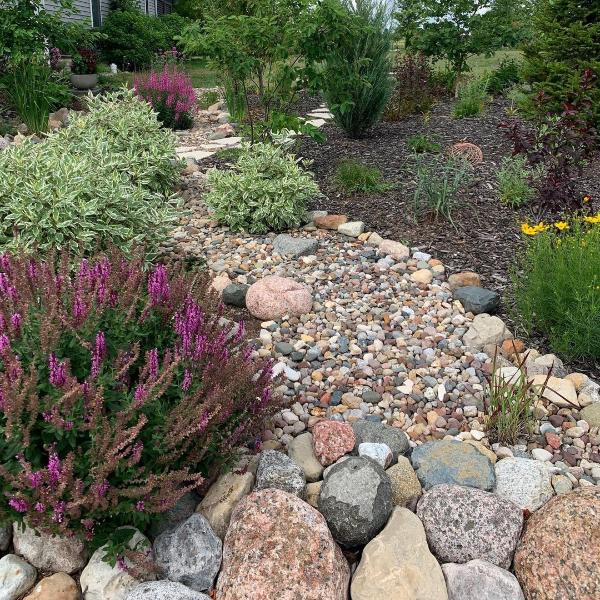Not known Facts About Hilton Head Landscapes
Not known Facts About Hilton Head Landscapes
Blog Article
The 30-Second Trick For Hilton Head Landscapes
Table of ContentsThe Buzz on Hilton Head LandscapesThe 5-Second Trick For Hilton Head LandscapesExcitement About Hilton Head LandscapesHilton Head Landscapes Fundamentals ExplainedSome Known Factual Statements About Hilton Head Landscapes Indicators on Hilton Head Landscapes You Need To KnowThe Best Guide To Hilton Head Landscapes
Line produces all forms and patterns and can be made use of in a variety of methods the landscape. Line in the landscape is created by the side between 2 materials, the synopsis or silhouette of a kind, or a long straight function. Lines are an effective tool for the developer since they can be used to produce an infinite selection of shapes and types, and they control activity of the eye and the body.

Lines in the landscape. The homes of lines establish exactly how individuals react to the landscape, both emotionally and physically.
The Ultimate Guide To Hilton Head Landscapes
Straight lines are usually found in hardscape edges and material. Curved lines create a casual, all-natural, unwinded character that is associated much more with nature and asymmetrical balance. Curved lines move the eye at a slower pace and add enigma to the room by developing hidden sights. Upright lines relocate the eye up, making an area feel larger.
Vertical lines in the landscape consist of tall, narrow plant product, such as trees, or high frameworks, such as an arbor or a bird home on a pole. Straight lines relocate the eye along the ground plane and can make a space really feel larger. Low lines are extra restrained and produce a feeling of remainder or repose.
Our Hilton Head Landscapes Diaries
Low lines are developed by low yard walls, sidewalks, and short bushes. Lines are used to attract forms on a strategy. In plan sight, they specify plant beds and hardscape areas. Lines are additionally produced by the vertical types of constructed functions and plant product. There are three main line types that develop form in the landscape: bedlines, hardscape lines, and plant lines.
Bedlines attach plant product to your home and hardscape due to the fact that the eye follows the line, relocating the look via the landscape. Hardscape lines are created by the edge of the hardscape, which defines the constructed framework. Line can also be produced by long and slim products, such as a fencing or wall surface.
Hilton Head Landscapes Can Be Fun For Everyone
Type is found in both hardscape and plants, and it is typically the leading visual element that spatially arranges the landscape and often figures out the design of the yard. The type of structures, plant beds, and garden ornaments also identifies the general type style of the garden. Formal, geometric forms include circles, squares, and polygons.
Plants produce type in the garden with their details or silhouettes, yet form can also you can look here be specified by a space or unfavorable room between plants - hilton head landscapers (https://canvas.instructure.com/eportfolios/3001127/Home/Transform_Your_Yard_with_Hilton_Head_Landscapers). Circles can be cycles, or they can be split into half circles or circle sections and incorporated with lines to develop arcs and tangents
The Ultimate Guide To Hilton Head Landscapes
Circles can also be extended right into ovals and ellipses for more range and passion. Circles are a solid design form due to the fact that the eye is always attracted to the facility, which can be utilized to stress a prime focus or link various other forms. Number 2. Round kinds in hardscape and yard panels.
The square kind can also be segmented and previously owned continuously to develop a grid pattern. Unlike circles, squares are more powerful on the brink, which can be lined up or overlapped to develop one-of-a-kind patterns and more complicated kinds. Polygons are many-sided forms with straight edges. Triangles, for example, are three-sided polygons.
Twisting lines typically simulate the all-natural training course of rivers or streams and can be referred to as smooth lines with deeply curved undulations. Meandering lines (Number 3) work well for paths, plant bedlines, and completely dry stream beds. Twisting lines can include passion and enigma to a yard by leading audiences around edges to find new sights and rooms.
A Biased View of Hilton Head Landscapes

Figure 5. Fragmented edges: tipping rocks in path. Kind is the most enduring top quality of a plant (bluffton landscaping). https://www.figma.com/design/CqNShAPJ75DpMEeGt0LfQR/Untitled?t=lZt5bM9P0avBSZvk-1. Common plant types are well established and standard, as type is the most regular and well-known characteristic of plants. Type can also be developed through the massing of plants, where the total mass produces a different kind than a private plant.
A highly contrasting kind must be utilized with careone or two job well as a focal factor, yet way too many create mayhem. Natural plant kinds, as opposed to over-trimmed kinds, should develop the mass of the structure. The relevance of total form is essentially based on the checking out perspectivethe type of a tree can appear rather different to an individual standing under the canopy versus checking out the tree from a distance in an open area.
Getting The Hilton Head Landscapes To Work
Plant forms likewise produce and define the gap or open spaces between the plants, producing either convex or scooped forms in the spaces. High-arching tree branches usually create a concave open room under the branches, and a rounded cover with reduced branches loads the space to produce a convex type in the open area under the tree.

Report this page